Suunto 9 Peak – A hiker’s long term review
This is a long-term review as a hiker of the Suunto 9 Peak. I’ve been using the Suunto 9 Peak since it first came out in June 2021. At that time, I was looking to upgrade my Suunto Traverse. While I loved that watch, I was primarily looking for something that could measure the HR rate to avoid hiking with an HR belt all the time. Also, for something with a longer battery life.
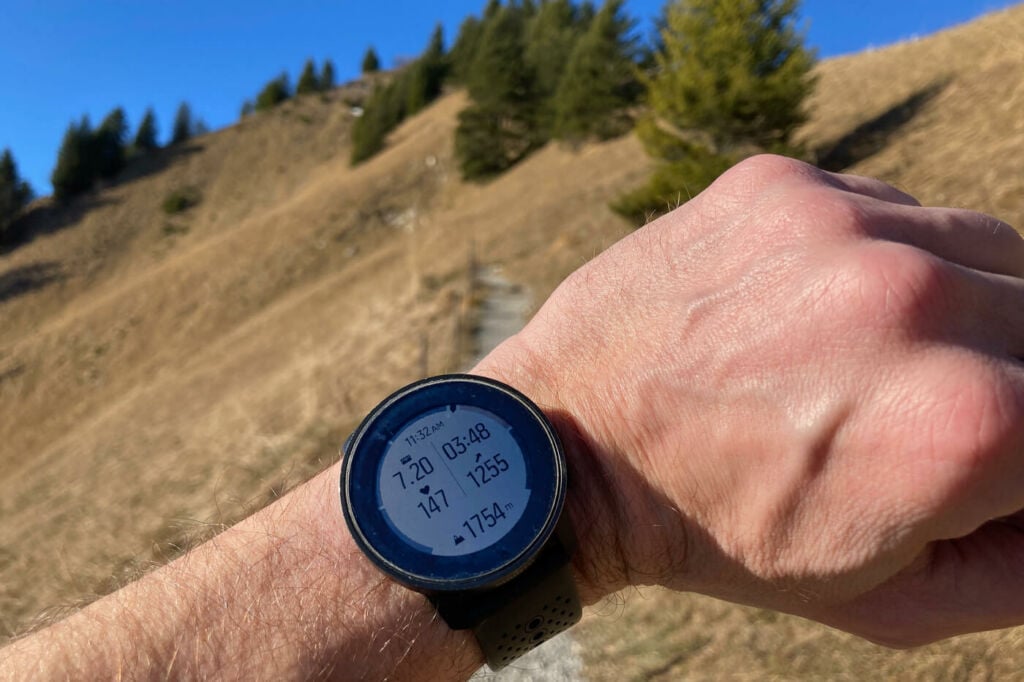
Please note that as an Amazon Associate, I earn from qualifying purchases. If you find any of these recommendations helpful and decide to purchase a product I recommend, I will receive a small commission. This commission will help me keep the site running, and it will not cost you anything extra. This also means you will effectively support this site for free if you purchase one of these guides through my site.
Suunto 9 Peak – a Hiker’s long term review
Suunto 9 Peak Models
Let’s start by saying there are different models available. The Peak, the Peak Titanium and the Peak Titanium Pro. I have the 9 Peak all black since, for me, the price difference didn’t justify the cost. Here you can find a full comparison, but essentially the Peak 9 and Peak 9 Titanium are the same watch. The only difference is the case. The Peak 9’s is stainless steel, while the Titanium’s is Titanium grade 5, and the watch is slightly lighter (10 grams). The Peak Pro’s main benefit is instead the battery life. Supposedly, it lasts twice as long, more or less. All the models have a touch screen.
Suunto 9 Peak on the Trails
I actually use this watch for all the sports I practice, which include road cycling, mountain biking, running, swimming and snowboarding. I do spend most of my time hiking, however, so this review is going to be focusing on the hiker’s perspective. When recording an activity, the watch is quick at establishing a GPS connection. It will occasionally take a little longer, but most of the time, it happens within 5 seconds.
While on the trail, the watch is easy to operate. I have a fully customized interface (more below), and I can easily switch using the touch screen and the three lateral buttons. No need to fiddle around much.
Also, this watch is really robust. As a hiker who often scrambles up a mountainside, I am bound to hit it against the rocks, sometime with force. I can tell you the Suunto 9 peak is really hard to scratch. I hit the rocs rather hard several times, and there’s yet to be a single scratch on it. That is rather impressive. This is also great for anyone spending a lot of time on the trails or even for climbers.
Still, I purchased a film to protect the glass just for good measure. After I hit it rather hard for the first time, It did not scratch at all, but I did not want to risk it. I don’t mind a minor scratch on the case, but I would rather not risk the face of the watch.
Watch Face Customization
The watch can show plenty of customizable data. There’s really a lot of information available, and you can also customize multiple faces for each type of activity. You’d need to customize faces in the app, and the watch will sync when connected via Bluetooth. For Hiking, I have 5 different watch faces I can swap while recording the activity. Here they are:




As you can see, there is a wealth of information you can look at simultaneously. The temperature does not really measure it correctly when on the wrist, though, so you’d need to take the watch off for a few minutes to measure it correctly. Also, all the watch faces will show the time except the breadcrumb navigation.
Navigation
While it is technically possible to pan a route in the app and use the breadcrumb feature to navigate, I personally don’t see much point in it. I’d rather have a proper GPS device when I need navigation guidance, and breadcrumb navigation does not really cut it for me. Still, I love this feature. I always use it in case of doubts on my way back; it will show the pat it recorded, so you can follow it. This is great, so I can save the battery of my GPs device.
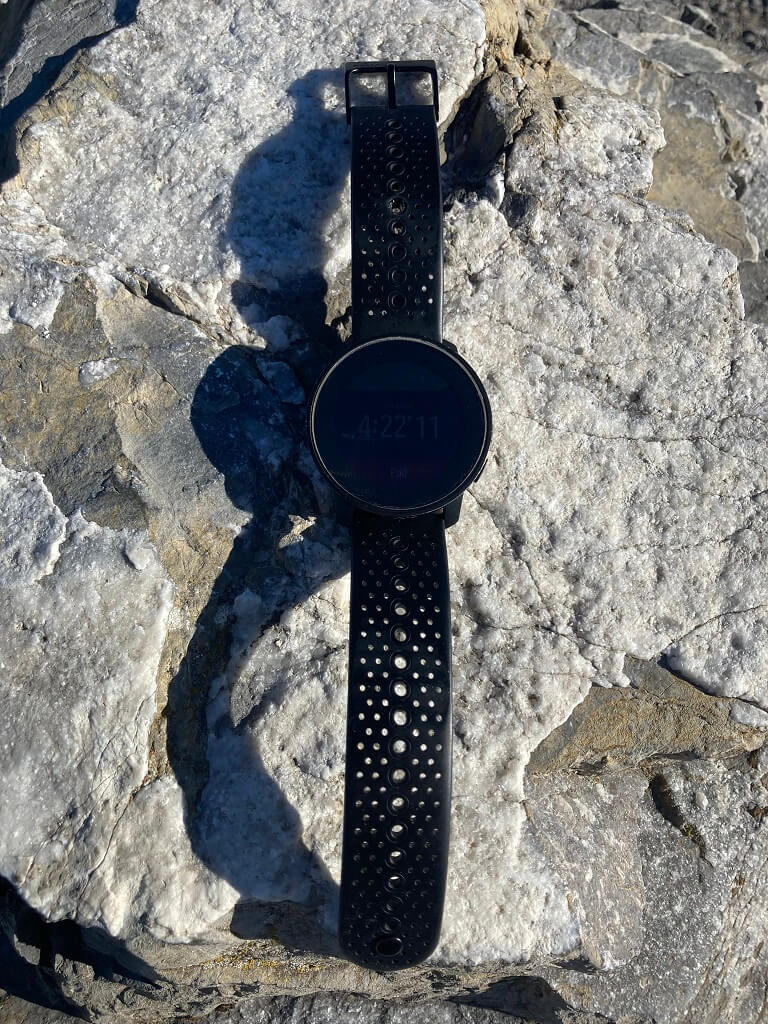
Taking a break
What I like
- Weight: Lightweight, the battery and the overall minimal look. You almost don’t feel it on.
- Watch face customization: there are plenty of options to customize your own data for each activity type.
- Battery: I can take it on three very long hikes before I need to recharge it. I don’t use the highest consumption settings but the medium one for hiking
- Breadcrumbs navigation: I use a Garmin eTrex 22x for proper navigation, but I use the breadcrumb navigation in the watch when navigating back.
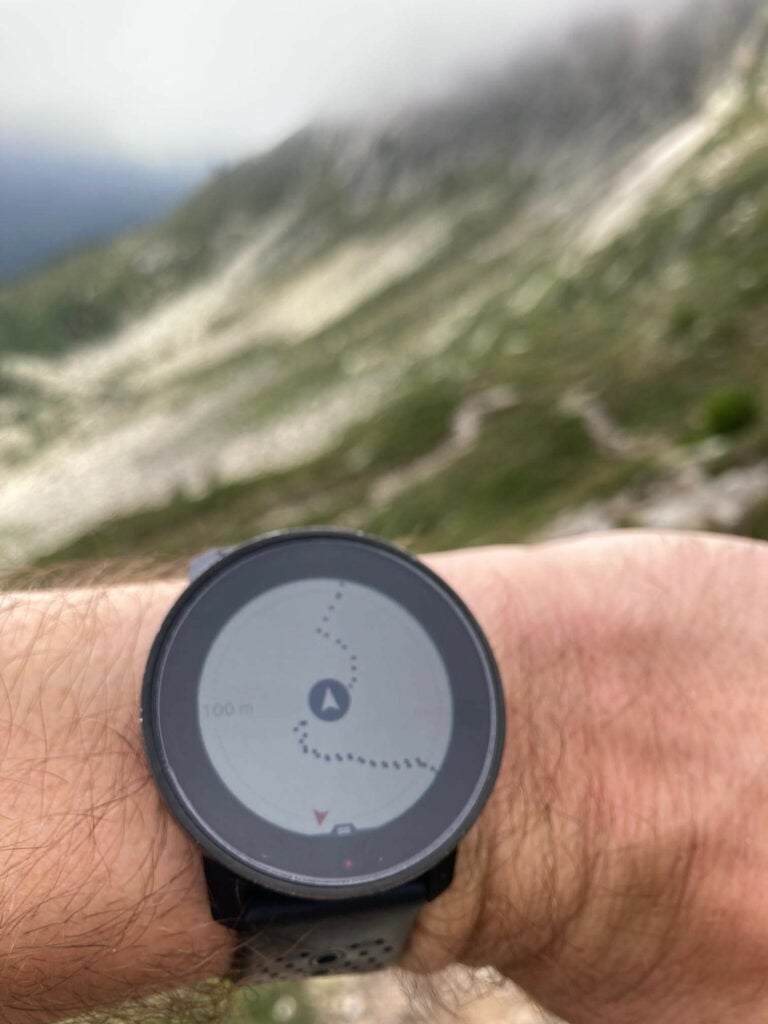
The Breadcrumbs navigation feature
What I didn’t like
- Blood Oxygen: First, you can’t measure it while recording an activity, which is a bit of a bummer. You can only measure it. Secondly, it isn’t much accurate, but good to get a trend or general measure. Still, sometimes it comes up with 70% blood saturation or similar values.
- Heart Rate Sensor: It seems to be decently accurate for a watch, but it tends to underestimate the number of beats. I am saying this because all the activities I record without an HR belt consistently have a lower HR rate. Also, sometimes the watch seems to have tachycardia attacks :).
- Charger: the Suunto 9 can only be charged with the standard charger; no other options for it. If you lose the charge on vacation, good luck finding a replacement. I lost mine on a trip to Norway and could not find a replacement in either the Lofoten or Senja islands.
Suunto App and integration with other Activity Tracking Apps
Suunto App offers plenty of features and integrations. all the activities can be synched automatically to Strava and Komoot TrainingPeaks, Endomondo and many more.
I use Strava and Komoot, too; the sync works well enough with both, but for some reason, while Strava gets the correct sport after the synch (hiking), Komoot does not and shows “other sport”. A bit annoying but not a big deal either.
I personally like all the data I can find in the Suunto App and more than enough for my needs. Also, the fatigue/load calculator seems to be way more accurate in the Suunto app rather than in the Strava one for some reason.
The fatigue/fitness values often go in two opposite directions on Stava and the Suunto App, and compared to my own personal tiredness/workload, I definitely feel the Suunto one is more accurate. =I’ll probably not renew my Strava Pro, since the Suunto app fits all my needs.
You can replay all the activities in 3D, similarly to Relive, which is pretty cool. Also, you get access to the Desktop Version, Sport-Tracker, using the same username and Password for the app.
Conclusion – Suunto 9 Peak – A hiker’s long term review
This is a watch I love and that I will be using for a very long time. When I bought it, I was looking for something durable as well, and so far, after a year and a half of abuse, the watch looks almost like new. I’ll definitely use it for a long time to come! If you are also looking for a robust, lightweight outdoor watch that can support your hikes, this is definitely one of the best choices out there.
Additional resources
- Check out more gear reviews.

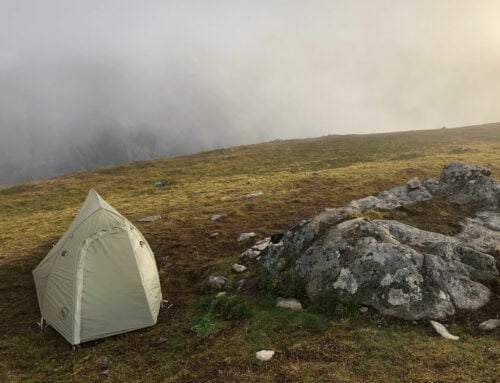


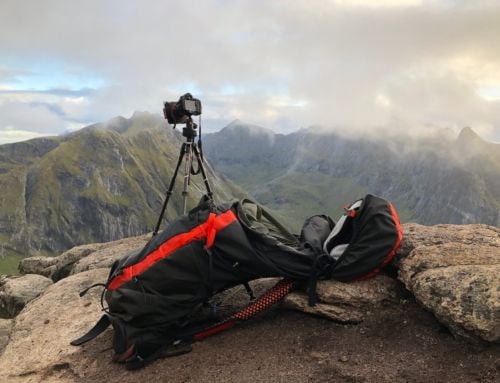
Leave A Comment